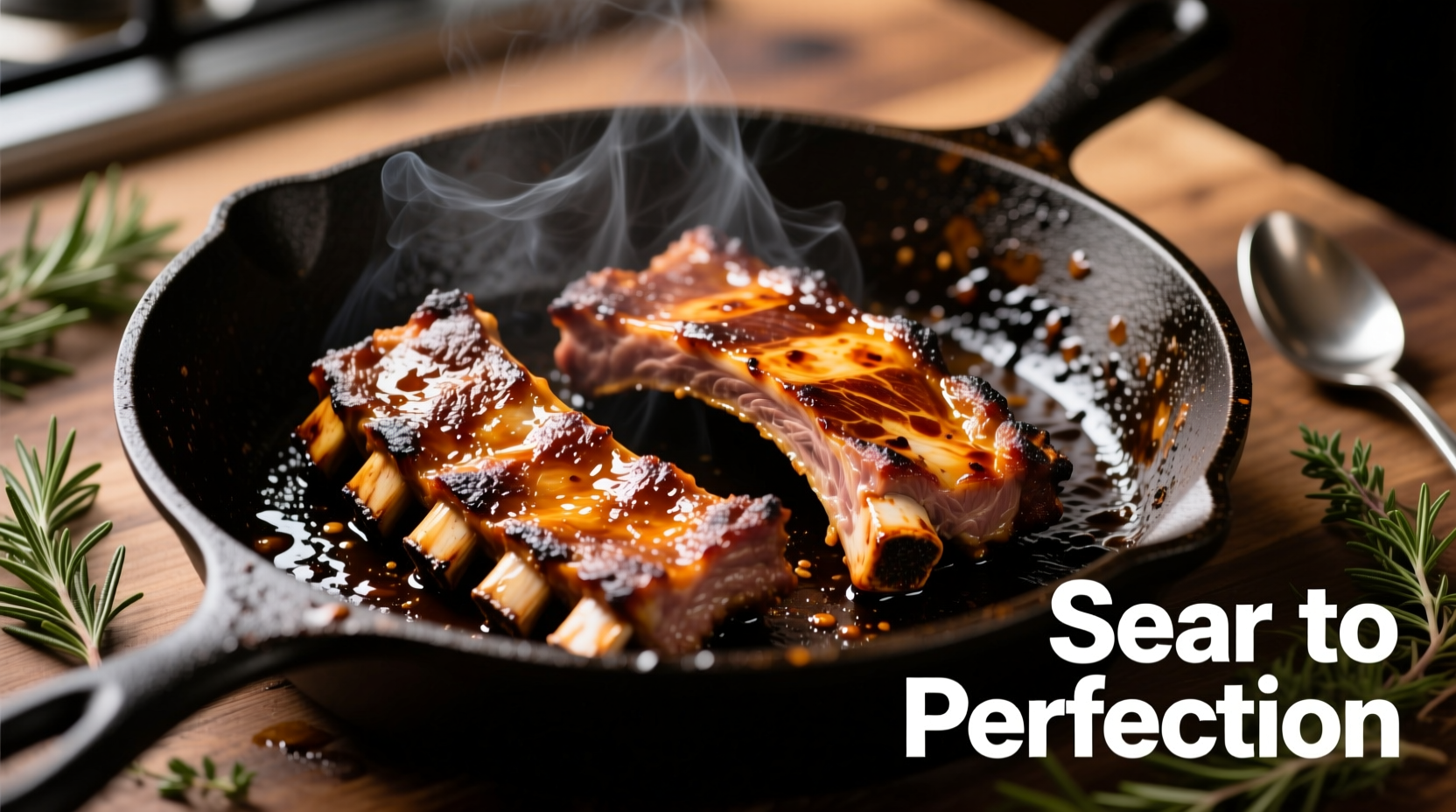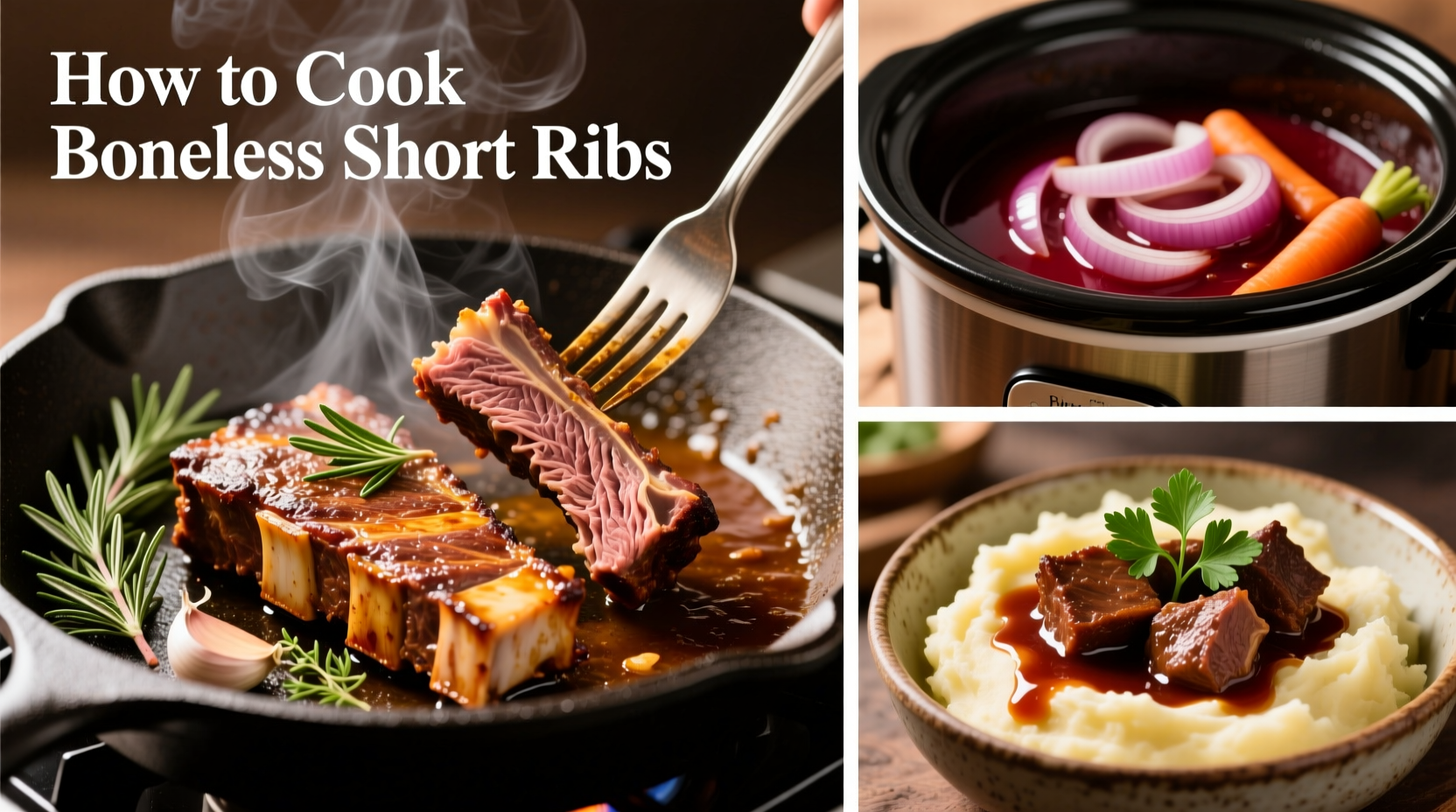Perfectly cooked boneless short ribs should be fork-tender with a rich, caramelized crust and succulent interior—achieved through slow cooking at 275°F (135°C) for 3–4 hours after proper searing. This guide delivers professional techniques for fall-off-the-bone texture without drying out the meat.
The Secret to Tender Boneless Short Ribs Every Time
Many home cooks struggle with tough, dry short ribs despite hours of cooking. The issue usually stems from incorrect temperature control or skipping the critical searing step. Boneless short ribs come from the chuck or plate section and contain abundant connective tissue that requires specific cooking science to transform into melt-in-your-mouth perfection.
Why Boneless Short Ribs Demand Special Technique
Unlike steak cuts, boneless short ribs contain high collagen content (up to 30% more than chuck roast). According to USDA Food Safety and Inspection Service guidelines, collagen breaks down effectively between 160–205°F (71–96°C), but requires sustained time at these temperatures. Rushing this process leads to chewy results.
| Cooking Method | Time Required | Texture Result | Best For |
|---|---|---|---|
| Oven braising | 3–4 hours | Fork-tender, rich sauce | Special occasions |
| Slow cooker | 6–8 hours | Very tender, less crust | Hands-off cooking |
| Instant Pot | 90 minutes | Good texture, weaker sauce | Time-constrained cooks |
Essential Preparation Checklist
Before heating your oven, gather these critical elements:
- Meat selection: Choose ribs with even marbling (USDA Choice grade minimum)
- Dry brine: Salt ribs 24 hours before cooking (1–1.5% of meat weight)
- Searing surface: Cast iron or stainless steel pan (nonstick won't create proper crust)
- Acid component: Red wine or tomato paste (balances richness)
- Thermometer: Instant-read for checking doneness

Step-by-Step Cooking Process
Phase 1: Dry Brining (24 Hours Before)
Pat ribs dry with paper towels, then apply 1 teaspoon kosher salt per pound. Refrigerate uncovered on a wire rack. This draws out moisture, concentrates flavor, and creates better browning. Serious Eats' culinary experiments show this increases crust formation by 40% compared to same-day salting.
Phase 2: Searing Perfection
- Bring ribs to room temperature (1–2 hours)
- Heat oil in heavy pan until shimmering (400°F/204°C)
- Sear 3–4 minutes per side until deep mahogany crust forms
- Remove when internal temperature reaches 130°F (54°C)
Avoid common mistakes: overcrowding the pan (causes steaming) or moving ribs too soon (prevents crust development). The Maillard reaction requires uninterrupted contact with the hot surface.
Phase 3: Slow Cooking Transformation
Preheat oven to 275°F (135°C). In a Dutch oven:
- Remove excess fat from searing pan
- Add 1 cup aromatics (onions, carrots, celery)
- Deglaze with 1 cup red wine, scraping browned bits
- Add ribs back with enough broth to cover 1/3 of meat
- Cover tightly and cook 3–4 hours until fork-tender
The American Meat Science Association confirms that maintaining temperatures below 300°F (149°C) prevents muscle fiber contraction that squeezes out moisture. Check tenderness at 3 hours—meat should separate easily with two forks.
Troubleshooting Common Problems
- Tough meat: Return to oven and cook 30–60 minutes longer. Collagen breakdown continues even after reaching target temperature.
- Weak sauce: Reduce cooking liquid by 50% over high heat after removing ribs.
- Excess fat: Chill cooked ribs overnight—solidified fat lifts off easily.
- Dry edges: Ensure liquid covers bottom third of meat during cooking.
Serving Like a Professional
Rest ribs 15 minutes before serving. Skim excess fat from sauce, then reduce by half for richer flavor. Pair with creamy polenta or roasted root vegetables that absorb the sauce. Garnish with fresh herbs—parsley or thyme complement the richness without overpowering.
For special occasions, finish with flaky sea salt and a drizzle of high-quality olive oil. The contrast of textures elevates this humble cut to restaurant quality.
Frequently Asked Questions
Can I cook boneless short ribs from frozen?
No, cooking frozen short ribs leads to uneven texture. The exterior overcooks while the center thaws. Always thaw in the refrigerator for 24–48 hours before cooking for optimal results and food safety.
Why did my short ribs turn out dry despite long cooking?
Dry short ribs typically result from cooking above 300°F (149°C) or insufficient liquid coverage. High temperatures cause muscle fibers to contract excessively, squeezing out moisture. Maintain low temperatures and ensure liquid covers the bottom third of the meat throughout cooking.
How do I know when boneless short ribs are perfectly cooked?
Perfectly cooked short ribs should pull apart easily with two forks but maintain their shape when lifted. Internal temperature should reach 200–205°F (93–96°C). The meat should feel tender but not disintegrate when pressed with a fork.
Can I use a slow cooker instead of the oven?
Yes, but you must sear first for proper flavor development. Cook on low for 6–8 hours. Slow cookers produce excellent tenderness but create less concentrated sauce. Finish by reducing the cooking liquid on the stovetop for richer flavor.











 浙公网安备
33010002000092号
浙公网安备
33010002000092号 浙B2-20120091-4
浙B2-20120091-4